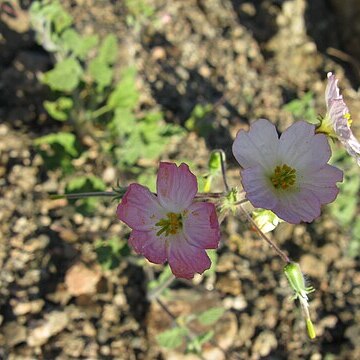A herb or small shrub. It can lie along the ground or be slightly erect. It can grow 60 cm high. It can grow each year from seed or keep growing for a few years. The leaves are almost round with a heart shaped base. The leaves have a mint like smell. The flowers are white or pink. They are on loose groups.
Aromatic, ± prostrate perennial, up to 400 mm tall, without a rhizome. Leaves crowded on a stunted stem, blade broadly ovate, usually cordate at base, green, downy. Flowers 2-14 per cluster, petals 7-11 mm long, emarginate at apex, white or creamy-white.

